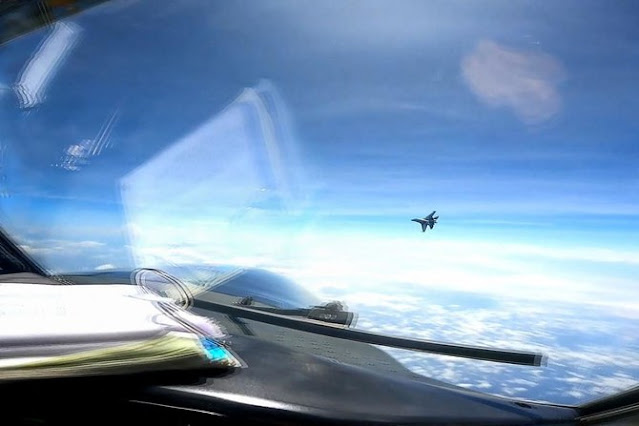Introduction:
A recent incident in the South China Sea has sparked tensions between Beijing and Washington, with each side blaming the other for provocative actions. China accuses the United States of conducting close surveillance that harms its national sovereignty, while the US military claims that a Chinese fighter jet flew aggressively close to an American reconnaissance aircraft. As defense leaders from both nations prepare to attend a security conference in Singapore, China's decision not to meet with US Defense Secretary Lloyd Austin further escalates the situation. This article delves into the details of the incident, the growing aggressiveness of China's military, and the implications for bilateral relations.
Chinese Accusations and US Response:
Foreign ministry spokeswoman Mao Ning condemned the United States for its persistent surveillance activities, asserting that they severely undermine China's national security and sovereignty. Mao called for an immediate end to what Beijing considers dangerous provocations. In contrast, the US Indo-Pacific Command described the Chinese fighter jet's actions as an unnecessarily aggressive maneuver, stating that it flew directly in front of the American reconnaissance aircraft during routine operations in international airspace.
Escalating Tensions and Missed Opportunity for Dialogue:
US defense leaders have expressed concerns about China's increasingly aggressive behavior over the past five years, including intercepting US aircraft and ships in the region. Recent tensions have also been fueled by disputes over US military support for Taiwan, China's claims of sovereignty over the contested South China Sea, and the sighting of a suspected spy balloon over the US. The decision of China's defense chief to not meet with US Defense Secretary Lloyd Austin at the upcoming security conference in Singapore further highlights the strained relations between the two nations.
Ongoing Communication Challenges:
While the US remains committed to open lines of communication with the Chinese army, China's unwillingness to engage in meaningful military-to-military discussions raises concerns. Foreign Ministry spokesperson Mao Ning called on Washington to respect China's sovereignty and security interests, correct any perceived wrongdoing, and create an atmosphere conducive to dialogue and communication between the two militaries. The US Indo-Pacific Command reiterated its commitment to operating in accordance with international law and called on all countries to do the same.
Continued Contestations and Regional Implications:
China's persistent challenges to US and allied military aircraft in the South China Sea reflect its deep resentment of American presence in the region. The strategic importance of the South China Sea, which China claims in its entirety, adds further complexity to the situation. With both sides asserting their rights and interests, tensions remain high. The incident serves as a reminder of the potential risks associated with such encounters and the need for open communication channels to prevent any escalation that could have far-reaching consequences.
Conclusion:
The recent incident in the South China Sea has intensified tensions between Beijing and Washington, with each side blaming the other for provocative actions. As defense leaders from both nations gather for the security conference in Singapore, the decision of China's defense chief not to meet with US Defense Secretary Lloyd Austin underscores the strained relations. The ongoing challenges in military-to-military communication and China's assertive behavior in the region highlight the importance of constructive dialogue to mitigate potential risks and maintain stability in the South China Sea and beyond.

